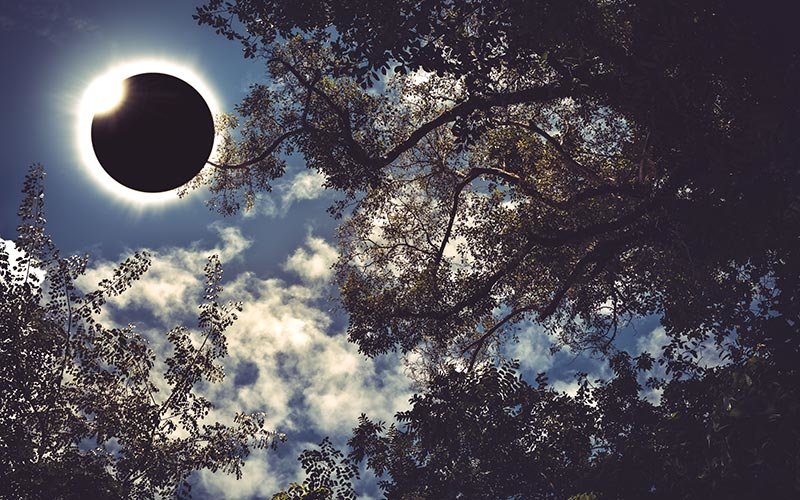
Cal State Fullerton astronomers don’t want the public to be left in the dark during the much-anticipated “Great American Eclipse” on Monday, Aug. 21. A public viewing will begin at 9 a.m. for those planning to join millions across the United States to witness the unusual, daytime celestial event.
Southern Californians won’t see the total eclipse — when the sun will be completely blocked by the moon, casting darkness on Earth — only a partial eclipse, explained Shovit Bhari, CSUF staff physicist.
The public viewing will be held on the lawn on the south side of Dan Black Hall, off Nutwood Avenue. The eclipse is expected to start at 9:06 a.m. and end just before noon. At 9:06 a.m. in Fullerton, it is expected that 1 to 5 percent of the sun will be covered and at 10:21 a.m., up to 70 percent will be covered, Bhari said.
Telescopes with filters designed to safely look at the sun, along with protective glasses made for solar viewing will be available for visitors. CSUF physicists Jocelyn Read and Joshua Smith also will be at the campus event to answer questions.
Meanwhile, Bhari, along with Murtadha Khakoo, professor of physics, and student Matthew Jackson, a civil engineering major, are packing their bags, telescopes and cameras and heading to Grand Teton National Park in Wyoming to witness the total eclipse. The CSUF eclipse chasers plan to livestream the event on the Department of Physics Facebookpage.
Bhari discusses the total eclipse of the sun and his anticipation of experiencing this phenomenon firsthand.
Why all the intrigue surrounding this cosmic event?
The June 8, 1918, solar eclipse, and this one a little over 99 years later, share a similar path of totality, which also started in Oregon but ended in Florida. The Feb. 26, 1979, solar eclipse had a different path and thicker swath across the U.S. While it started in Oregon and passed through North Dakota, it went northeast across Canada. The next total eclipse in the continental U.S. is April 8, 2024, and the path is nowhere close to California.
What is the solar eclipse?
The solar eclipse occurs when the sun, the moon and the Earth forms a straight line. The new moon blocks the sun creating the shadow on the Earth. The full shadow or the dark shadow is known as an umbra, and a partial shadow is known as penumbra. People around the umbra will witness the total solar eclipse as it extends into portions of 14 states from Oregon to South Carolina, and follows about a 65-mile-wide swath. The duration of totality will depend where you are viewing the eclipse along the path of totality. Most parts of the U.S. will witness a partial solar eclipse.
What will we see here in Orange County?
The moon will cover 65 percent to 70 percent of the sun’s surface, meaning it will fall under the penumbra shadow. You’ll see only the partial solar eclipse, where the moon covers only part of the sun’s disc.
What precautions should be taken when watching the partial eclipse?
Do not look directly toward the sun because it can damage your eyes. Wear protective glasses and do not point telescopes towards the sun without a solar filter. Also, pinhole cameras can be used to shield your eyes from the sun.
What will be most exciting for you?
I have seen a couple of partial solar eclipses, but I have not experienced the totality. This might be the only total solar eclipse I will witness in my lifetime so I’m looking forward to seeing the dark sky for couple of minutes during the daylight. I’m also excited about seeing the sun’s corona — the outermost atmosphere of the sun, which is visible only during the total solar eclipse. This is a rare Earth event. It’ll be a sight of a lifetime.
On-campus parking will be at a premium Aug. 21 since it is the first Monday of fall semester classes. Visit online for parking information.